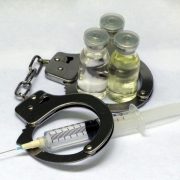Serial Killers: Where, How, and Why They Do What They Do
Serial killers may attack anywhere at any time. However, depending upon whether or not the murderer is organized or disorganized, those two factors can affect location and timing.
The set up, or initial place(s) where the killer(s) first meet their intended victim(s) varies. However, the majority of initial contact locations are areas known for vice activity, such as places frequented by prostitutes and/or drug users and dealers.
Secondary target areas include outdoor locations such as public parks and vehicle parking areas, etc.
A third choice location, but not the most favored, is the victim’s home, either by forced entry or by ruse. Also, indoor public locations such as bus stations, shopping malls, and places of business.
Breaking this down even further, we know from past experience and knowledge, that initial assaults by serial killers tend to most likely occur in outdoor public locations. Again, public parks, etc. The next prime attack location is a victim’s home. And, if the killer knows his victims, his own home may be another choice spot to kill.
Organized Killers
Organized killers are typically of above average to average intelligence. They’re often thought to be attractive. They’re neat and tidy and are often married or living with a partner during the times they committed their crimes. They hold jobs, are typically educated, and are skilled at their profession. They look to be in control. And they often have above average knowledge of police and forensics procedures. They enjoy reading and hearing about their crimes, with a particular affection for seeing their crime scenes in the media. It is not unusual at all for an organized killer to make contact with the media, or even the police.
Having carefully plan their crimes, organized offenders frequently go the extra mile to prevent leaving evidence behind. Their killings may be premeditated.
Killers in this group are antisocial and often psychopathic—they lack of empathy and other emotions. They’re manipulative of others. The tricky thing when dealing with organized criminals is that they perpetually appear quite normal, and they’ll do their best to use charm to their advantage.
They’re not insane and they definitely know right from wrong, but they lack conscience and feel or show no remorse for the deeds.
Dennis Rader, the BTK Killer, is an example of an organized killer/criminal.
Dr. Katherine Ramsland is a renowned expert on serial killers and she details Rader’s crimes in her book Confession of a Serial Killer: The Untold Story of Denis Rader the BTK Killer. As part of her research, Dr. Ramsland spoke with Rader by telephone once a week for an entire year. Each week, Rader called her from the El Dorado Correctional Facility and the two of them talked for an hour or so. Also as part of her process of delving into Rader’s mind, Dr. Ramsland played chess, by mail, with the killer.
As many of you know, Dr. Ramsland is a regular presenter at the Writers’ Police Academy.
Disorganized Killers
Disorganized killers/criminals typically do not plan their crimes in advance. They quite often leave evidence at the scenes of their crimes, such as fingerprints, footprints, DNA, tire tracks, or blood. They’re also known to simply leave the body as is, making no real attempt to conceal it or to prevent leaving telltale evidence such as semen or saliva. Their crimes are sometimes chaotic.
Disorganized killers tend to be younger in age. They’re unskilled workers who have no problem depersonalizing their victims. They may be mentally ill. They’re often of below average intelligence who lack communication and social skills. Many come from dysfunctional and/or abusive families. They may have been sexually abused by relatives, and they may present with sexual detestation. They’re loners who often travel on foot to commit crimes due to a lack of transportation. These are the neighbors of their victims. They’re often under the influence of drugs and/or alcohol when they commit their crimes.
Jack the Ripper, for example, was a killer who made no effort to conceal the bodies of his victims.
This is the killer who uses a sudden and quick attack to overpower their victims.
Race
White offenders are far more apt (over double) to meet their victims in an outdoor public place (a park or somewhere similar), while African American offenders tend to prefer a less conspicuous location. African American offenders, however, are more prone to choose a meeting place that’s in vice areas (locations where prostitution is known to exist, etc.) than do white offenders.
Location
Serial killers tend to commit murder in public locations. Their next choice is typically the homes of the victims.
For example, in the late 1980s, serial killer Timothy Spencer (the Southside Strangler) raped and killed four women—Debbie Dudly Davis, 35, an account manager, Susan Elizabeth Hellams, 32, a neurosurgeon, and Diane Cho, 15, a high school freshman, and Susan M. Tucker, 44, a federal employee.
Spencer committed those brutal murders while living at a Richmond, Virginia halfway house after his release from a three-year prison sentence for burglary. He killed the first three women on the weekends during times when he had signed out of the facility.
Officials had not yet linked Spencer to the murders, so they granted him a furlough to visit his mother’s home for the Thanksgiving holiday. Susan Tucker’s body was found shortly after the time Spencer returned to and signed in at the halfway house.
Police learned that Spencer entered the women’s homes through windows. Then he raped, sodomized, and choked them to death using ligatures. He’d made the ligatures in such a way that the more the victims struggled, the more they choked.
All four were discovered nude or partly clothed. Their hands were bound, and either rope, belts, or socks were tied around their necks.
Spencer had left no evidence behind other than DNA evidence. At the time DNA testing in criminal cases was new.
Spencer later was also implicated in the murder of lawyer Carolyn Jean Hamm, 32, in Arlington, Virginia. He was also thought to have raped at least eight additional women. However, he was never tried in those cases because he’d already been sentenced to death.
Spencer, by the way, was the first person in the U.S. executed for a conviction based on DNA evidence.
Patricia Cornwell’s first book, Post Mortem, was based on the Spencer murders.
In the spring of 1994, I served as a witness to Spencer’s execution by way of the electric chair. His death was gruesome.













Wow. This could be research for a novel. You’ve certainly had a varied and interesting career. Thanks for sharing it with us. (And I hope you don’t have a lot of nightmares from your job!)
Very interesting, especially the interview…